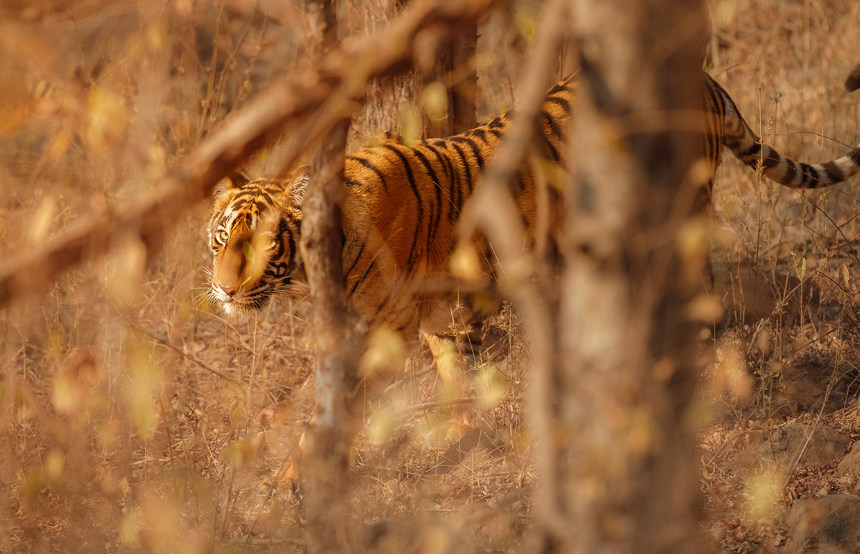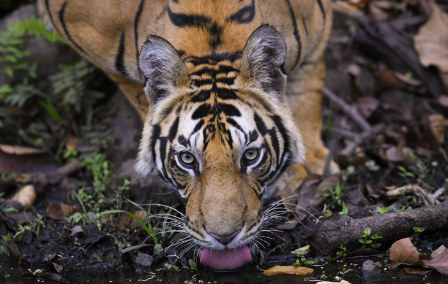Published 11th Sep. 2024
Reading time
One of the most distinctive animals of the African landscape and a member of the coveted Big Five (lions, leopards, elephants, rhinos and buffaloes), the majestic lion needs no introduction. Everyone’s favourite felines, these cool cats are every bit as fascinating as they are ferocious. From their iconic manes to their deadly hunting abilities, read on for our roundup of the top ten lion facts…
1. Big cats' habitats
2. Pride of place
3. Ferocious females
4. Roar-some communication
5. Clever claws
6. The mane attraction
7. Top of the food chain
8. Sleeping lions
9. Symbolic status
10. Prevalent poaching
1.
Despite earning the moniker ‘kings of the jungle,’ lions’ real-life habitats are a far cry from the tropical rainforest environment. Looking to spot a lion in the wild? You’ll find all but one population of lions in sub-Saharan Africa, roaming grasslands, savannahs and forests (Tanzania is home to the continent’s highest population). An outlying group of around 350 to 400 lions can be found in India's Sasan Gir National Park. These Asiatic lions are the last of a population that initially extended across parts of Europe and Asia but has sadly dwindled over time.
2.
Next up on our list of lion facts, let’s get to know a lion’s pride. Although they might be proud creatures (who can blame them?), we’re talking about a different kind of pride: a group of lions led by a matriarch that can number anywhere from a few individuals up to 40. Most members are related females, consisting of sisters, mothers and cousins, with only two or three males in the pride. Unrelated to the rest of the group, these males will go solo upon reaching maturity to establish their own pride.
3.
When it comes to feeding the pride, male lions can be lazy so-and-sos. Lionesses are the primary hunters within a pride; their sleek, slender physiques and lighter weights (around 126kg to males’ 190kg) make them efficient hunters. The females often work together when hunting to stalk, ambush and pounce on their unsuspecting prey. If successful, the lionesses return triumphantly to their pride to share the meal and strengthen social ties among the generations.

Image by Olivier Romano
4.
Now for one of the best lion facts on the list. Here’s a clue: it relates to their roar-some abilities (sorry). A lion might roar for many reasons, but its main purpose is to display its strength and defend its territories. After a successful kill, a lion will roar to claim their right to the kill and signal to other members of the pride that dinner is served. The lion’s roar is the loudest of any big cat and can be heard from a staggering five miles away. On average, male lion cubs learn to roar by the age of one, with females following a few months later. Just like Simba in The Lion King, they’ll be workin’ on their roars…
5.
Speaking of power and strength, did you know that lions’ sharp claws are retractable? Growing up to 3cm long, lions’ claws are deadly weapons in their hunting arsenal, so must be protected when not in use. Any time a lion is at rest (and most likely sleeping), they’ll sheath their curvaceous claws to keep them in pristine killing condition. It’s also the reason why you’ll never see claw marks in a lion’s pawprint.
6.
One of a male lion’s most distinctive features is its mane. Taking on average between five and six years to reach its full length, a male will only start to grow its shaggy fur at around four years old. Along with its roar, a lion’s mane is thought to be another symbol of a male’s dominance. The darker and larger the mane, the more formidable the male (and the more likely they are to attract eligible lionesses). Contrary to this, however, is a population of mane-less male lions found in Kenya's Tsavo National Park. Nobody can explain this phenomenon, but it’s likely that the harsh climate is the culprit.

Image by Olivier Romano
7.
As apex predators, lions needn’t worry too much about becoming another animal’s meal. While occasionally, a plucky hyena or African wild dog pack will try their luck, lions reign supreme in the savannahs of Africa. But some facts about lions might come as a surprise. Although lions boast a bite over 30 times stronger than a domestic kitty’s, did you know that they actually have a lower successful kill rate than our feline friends? Looks can be deceiving…
8.
As the aptly named children’s game suggests, lions love to sleep. In fact, the fearsome lion is known to hit the snooze button the most out of its fellow big cats. Far from preferring a quick catnap, males sleep between 18 and 20 hours a day, while females get shuteye for around 15 to 18 hours. This helps lions restore their energy between females’ hunts and males’ territory defence. It’s tiring work being an apex predator, after all.
9.
From depictions in art and religion to films and literature, lions have always enjoyed prominent symbolic status. Most commonly, lions represent power, courage and strength (no surprises there). So whether your favourite fictional lion is The Lion King’s Mufasa, Aslan from The Chronicles of Narnia or the cowardly lion in The Wizard of Oz, you’re not short of cultural references.

10.
Lion facts can’t always be cheery. Sadly, even the king of beasts is not untouchable. Humans remain the greatest threat to lions, who illegally hunt the magnificent mammals for their body parts. The big cats’ bones, teeth and claws are particularly prized in the illegal wildlife trade and traditional medicines. Farmers’ retaliatory attacks against lions killing their livestock, as well as the trophy hunting culture of the 20th century, have also greatly threatened lion populations.
Written by Hannah Whitehall | Header image by alexpermyakov/stock.adobe.com
Practical advice and inspiration for your next trip

Searching for the best safaris in India? We’ve got you covered. Whether you’re keen to track tigers in Madhya Pradesh, admire Asiatic lions in Gujarat or photograph forest eagle owls in Kerala, your India holiday awaits. While Bengal tigers steal the limelight in Bandhavgarh National Park, don’t forget about the shaggy sloth bears (though they’re not as cuddly as they look). Feeling up for the adventure?
15th September 2025 - India Safari & Wildlife

With their sleek, tangerine-tinged coats, piercing eyes and commanding presence, nothing beats the thrill of seeing a tiger in the wild. And where better than in India, home to the largest population on Earth? But when it comes to the best time to see tigers in India, it all depends on what you want from your trip. Whether you’d rather vivid green landscapes or crowd-free safaris, we’ve got the insider intel on when to see India’s famous big cats.
23rd June 2025 - India Safari & Wildlife

Channelling your inner cowboy and heading on a horse safari in Botswana is one of the ultimate safari experiences. With a variety of stunning landscapes available for exploration, it’s an incredible way of getting up close and personal with game in a way that just isn't possible in a traditional 4x4. You won't just be on a safari, you'll be in it. With the contrasting scenes of the Makgadikgadi Salt Pans, Thamalakane River and Okavango Delta in the nation’s arsenal, it's not hard to understand why Botswana horse safaris remain such a popular choice.
9th June 2025 - Botswana Safari & Wildlife

Our team of destination experts will get to know you and your unique requirements for your holiday

We work with you to build an ultra-personalised holiday itinerary with your choice of accommodation, experiences and activities

All of our holidays include little extras designed to make a big difference to your trip, from fast-tracking you through airport check-in and security to our network of local Concierges